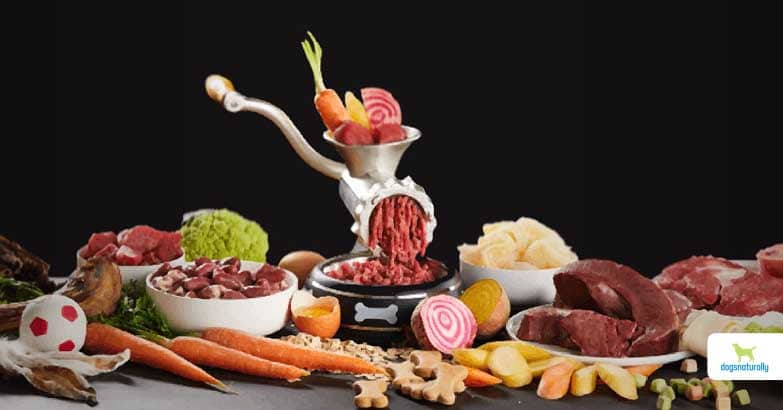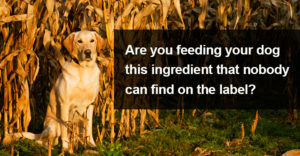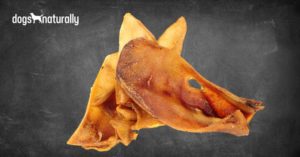Everyone is aware that they have several options when shopping for their dog’s food. Most have waded through these different forms and types. They settle into a habit that seems to be working … that is to say, nourishing their dog adequately.
The most common choices include:
- Dry kibble
- Canned
- Fresh frozen
- Freeze-dried
Freeze-dried pet food isn’t the largest sector of the industry … but it is the fastest-growing. Other less familiar options are fermented, meals (or mash), and of course homemade.
Industry Size
The size of the pet care industry in the US is breathtaking. In 2007, Americans spent more on their pets than the GDP of two-thirds of the countries in the world! Pet food is the major component of this … ahead of health care and accessories (collars, leashes, dog beds).
To picture how much this is, imagine …
- A railroad car holding 90 tons of pet food
- 100 of these cars in one train
- 4 of these trains a day
It’s estimated Americans buy 40,000 tons of pet food –- a day! And the entire world is 3 times this.
Decision Priorities
When people make a dog food decision, it’s based on 3 primary concerns:
- Economy
- Convenience
- Nutrition
It’s not possible to optimize all three. So whether you know it or not … every dog food purchase is a compromise. Insight can’t prevent your purchase decision from being a compromise, but it need not be a naive one. So let’s look at the choices … and where each of them fits.
Kibble
Kibble meets both cost and convenience criteria.
- Premium dry kibble costs about $70 for a 44-pound bag. That’s $1.59 a pound.
- Economy varieties of dry kibble cost $25 for a 50-pound bag, or $.50 a pound.
Whether premium or not, dry kibble type foods are low cost. So it’s what people buy if economy is the main concern. One reason kibble costs less is that it’s cheaper to ship food if it contains no water … and doesn’t need refrigeration or freezing.
And dry kibble dog foods are convenient. The feeding chore reduces to a cursory scoop and dump.
RELATED: Kibble: Why it’s not a good option for your dog …
Canned
In our local market, we pay $2.29 or more for a 12.5 oz can of maintenance dog food. On an equal dry matter basis, that’s equivalent to paying $12.00 a pound for kibble … or $600 for a 50 lb bag!
Canned foods will keep for endless months if unopened. They’re also convenient … just scoop and go. But they must be refrigerated after opening. So they’re slightly less convenient than kibble.
Frozen
Frozen dog foods are more costly and finish poorly in the convenience derby. They must be stored frozen but thawed before feeding.
RELATED: Why feed raw?
Freeze-Dried
Freeze-dried dog foods equal kibble for convenience. They need no refrigeration. They’re unsurpassed for taste and nutrition. But they sell at a premium.
Of course, economy has more emphasis on your buying decision if you own four Rottweilers. Optimum nutrition is more affordable if you own one Chihuahua.
The Technology
It’s not openly discussed. But the whole point of any given dog food is to provide nourishment for your dog … while outmanoeuvring microbe destruction on the pantry shelf. Mankind’s tried and true methods for this are … drying, cooking, freezing and freeze-drying. (Which should really be called vacuum drying, to be more accurate. You’ll see why when I describe the process)
So I’d like to take a closer look at the technology for all 4 product types. They make up more than 95% of the pet food market in North America.
Kibble: Enter The Extruder
As I mentioned, the pet food industry is behemoth. And the vast majority of it is kibble … made on a machine called an extruder.
The basic concept of the extruder is clever … and it’s been around for many decades.
- A big electric motor spins a long screw inside a barrel.
- The close tolerance between the screw and the sides of the barrel create friction and heat.
- The food is cooked by the heat as the screw pushes it down the barrel.
The food is wet when it comes out of the extruder. So the next stop in the process is a dryer. This is usually a forced air type – or wind tunnel.
After this, another machine sprays on liquid fat … readily soaked up by the warm dry kibble.
The last step involves dusting different powders onto the dry, sticky kibble. These powders usually include flavors to enhance palatability. They can also include antioxidants and mold inhibitors … and vitamins or trace minerals.
Making It Crunchy
The big attraction in a dry piece of kibble is the “crunch,” or its texture when chewed. I don’t know if dogs are addicted to this crunch … but people certainly act like they are!
This crunch is due to a unique property of starch. It expands when heated in a wet environment … but stays expanded when cooled and dried. Think of a crunchy breakfast cereal that was a fine dry powder … before extrusion and starch expansion.
To be crunchy, kibble must contain a lot of starch … at least 25 to 30%.
RELATED: Here’s how to make kibble more nutritious on a budget …
Grandma’s Fall Canning Process
Industrial societies have been canning food since before the civil war. These canned or “tinned” foods had some health risks when first invented. A can that bulged with gas was obviously inadequately sterilized.
Today’s canned dog foods are the epitome of safety. Cans of dog food are heated in what is called a retort. This is simply an industrial size pressure cooker allowing high (~120° C) temperatures. Canned dog foods are sterile – meaning no (zero!) bacteria, mold or virus before opening.
The canning process also allows food technologists to combine ingredients creatively. What appears and tastes like chicken meat may in fact be pea protein isolate and tapioca starch.
A line of canning machinery in a pet food plant will include …
- A mixer
- (Often) A steam jacketed kettle that allows pre-heating
- A filling machine that puts the food into a can and seals a lid on it
- The cooker or retort that sterilizes the cans of food
- A machine that applies a label to the can and stacks it in a box on a pallet
Canned dog food is not the best economy; it’s midway on the convenience scale. And it can be anywhere on the spectrum of proper nutrition.
Frozen In Time
Frozen food avoids any heat application, which appeals to many dog owners. As I often point out though … cooking is not a big negative. After all, most of us live long lives subsisting on cooked food.
Frozen dog foods are not the most economical choice. It’s expensive to ship the weight of water around the country. And even more so if that water is in a frozen state. Imagine the fossil fuel cost to keep a truckload frozen in the southwestern desert in the summer. And then it must be kept frozen in the retail store.
A frozen plant production line is simplistic. There’s a mixer and a package machine, then into the freezer it goes.
Dried Without Heat: Freeze-Dried
This method of dog food production uses a classic law of physics.
As we learned in grade school, the higher we go up the side of a mountain, the easier it is to boil water. At higher altitude, there’s less air pressure … so water boils at a lower temperature. If you go high enough, water will actually boil at room temperature (meaning it goes from a liquid to a gas).
Even better, the frozen water in dog food will effervesce in a freeze dryer. It goes directly from a solid to a gas, without passing through a liquid state … if the air pressure is low enough. That’s why I said a freeze dryer machine is more correctly called a vacuum dryer.
Drying without heat avoids protein denaturation (or natural enzyme damage). And it allows the best palatability.
It’s every bit as convenient as kibble and even more tasty than frozen. It is an expensive choice … but the low level of carbohydrates is a distinct plus and worth a premium.
True to form, the North American marketplace offers a wide array of options for dog food. Optimum nutrition comes from freeze-dried. This is the product type to emphasize – to the extent that budget allows.













